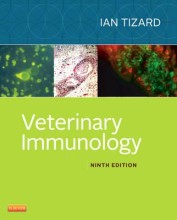Nutrient requirements
11 important questions on Nutrient requirements
Magnesium toxicity + deficiency
- not known
- Acts as a laxative and may cause scouring
- grass tetany in ruminants (low Mg levels in grass, or high K and CP levels reducing the absorption of Mg)
- also possible when milk is used as the only feed
Sodium toxicity + deficiency
- in dairy cows -> reduces feed intake and may cause pica, reduce milke production
- loss of appetite
- negative influence on fertility
- rarely possible
-> excess Na in ruminants -> result in blindness
Potassium toxicity + deficiency
- loss of appetite
- muscle weakness
- diarrhea
- mostly under conditions of water deprivation
- Higher grades + faster learning
- Never study anything twice
- 100% sure, 100% understanding
Chlorine toxicity + deficiency
- not common under practical conditions
- alkalosis (slow and shallow breathing)
- listlessness
- muscle cramps
- loss of appetite
- rare if the animal has enough water available
Sulphur toxicity + deficiency
- associated with protein deficiency
- rumen microbes may also become deficient when part of the protein is replaced by non-protein-N (NPN)
- reduced feed intake
- retarded wool growth
- RARE
Irion toxicity + deficiency
- Deficiency
- causes anaemia
- loss of appetite
- rough hair coat
- reduced growth
- reduced resistance against efections (pneumonia)
Fat soluble vitamins
- can be stored in fat reserves in the body
- possible to provide animals with larger quantities at one time because the surplus can be stored in the animal's fat reserves or preferably in the liver
Water soluble vitamins
- most of B-vitamins have a function as components of co-enzymes
- they also contain nitrogen and sometimes sulphur
- not stored in the body
- surplus is excreted in the urine and hence a regular exogenous supply is essential
- can be synthesized by microbes in the rumen, so supplementation of the diet is not necessary with ruminants
Requirements and toxicity of vitamins
- vitaminosis -> disease caused by excess amount of (mostly fat-soluble) vitamins in the diet
- insufficient levels of vitamins in diet -> nutritional disease or poor growth performance
Carbohydrates chemical and physical structure
- poly-hydroxy aldehydes, ketones, alcohols or acids with 5 (pentoses) or 6 (hyxoses) c-atoms per unit of monosacharide
- 3 to 9 of these monomer units together with acetal type linkages -> oligosaccharide
- 10 or more units -> polysaccharide
Factors affecting nutrient requirements
- Efficiency of the digestive system/metabolism can influence the requirements for maintenance
- lower production of the digestive enzymes -> absorb less nutrients per unit of diet -> requires more diet to meet requirements
The question on the page originate from the summary of the following study material:
- A unique study and practice tool
- Never study anything twice again
- Get the grades you hope for
- 100% sure, 100% understanding





























